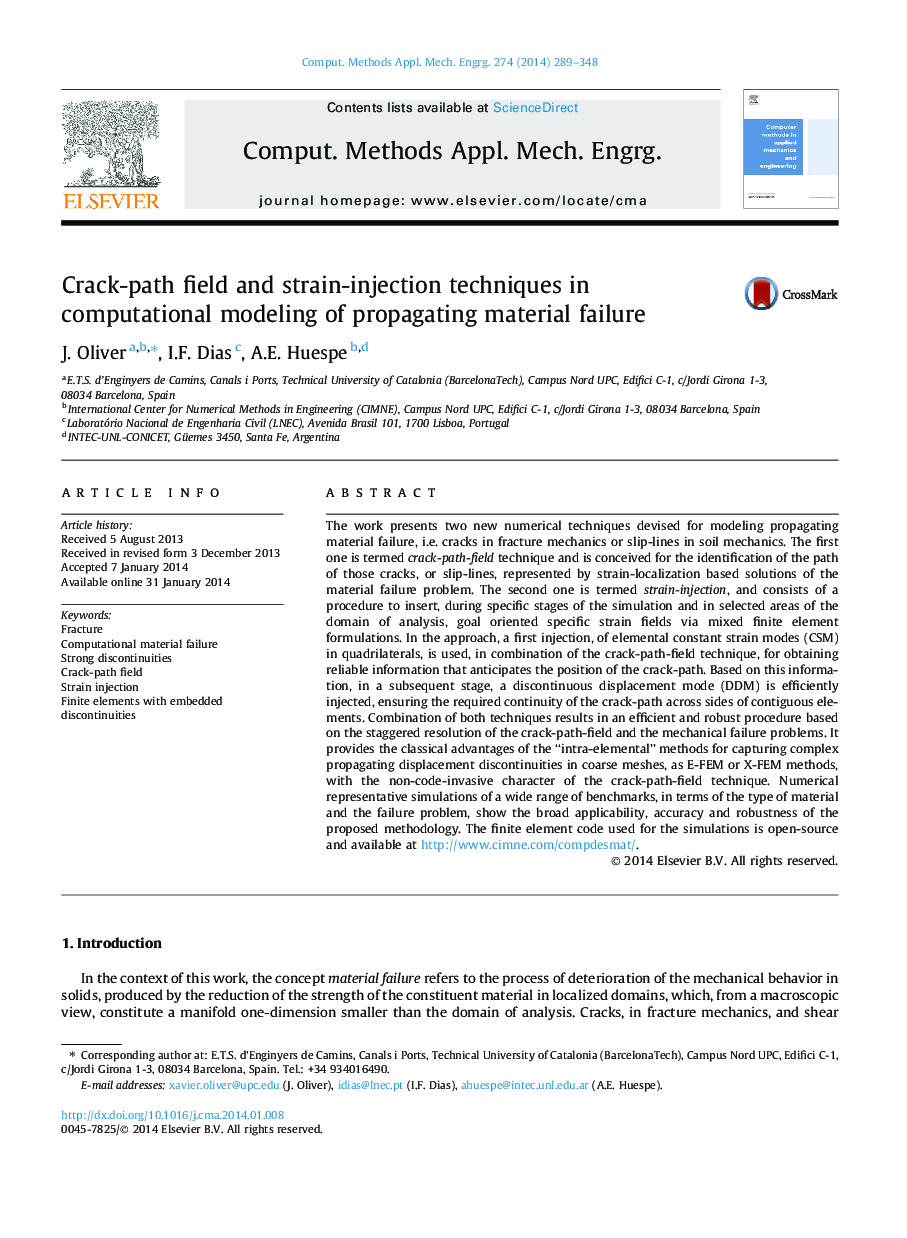| Article ID | Journal | Published Year | Pages | File Type |
|---|---|---|---|---|
| 6917744 | Computer Methods in Applied Mechanics and Engineering | 2014 | 60 Pages |
Abstract
The work presents two new numerical techniques devised for modeling propagating material failure, i.e. cracks in fracture mechanics or slip-lines in soil mechanics. The first one is termed crack-path-field technique and is conceived for the identification of the path of those cracks, or slip-lines, represented by strain-localization based solutions of the material failure problem. The second one is termed strain-injection, and consists of a procedure to insert, during specific stages of the simulation and in selected areas of the domain of analysis, goal oriented specific strain fields via mixed finite element formulations. In the approach, a first injection, of elemental constant strain modes (CSM) in quadrilaterals, is used, in combination of the crack-path-field technique, for obtaining reliable information that anticipates the position of the crack-path. Based on this information, in a subsequent stage, a discontinuous displacement mode (DDM) is efficiently injected, ensuring the required continuity of the crack-path across sides of contiguous elements. Combination of both techniques results in an efficient and robust procedure based on the staggered resolution of the crack-path-field and the mechanical failure problems. It provides the classical advantages of the “intra-elemental” methods for capturing complex propagating displacement discontinuities in coarse meshes, as E-FEM or X-FEM methods, with the non-code-invasive character of the crack-path-field technique. Numerical representative simulations of a wide range of benchmarks, in terms of the type of material and the failure problem, show the broad applicability, accuracy and robustness of the proposed methodology. The finite element code used for the simulations is open-source and available at http://www.cimne.com/compdesmat/.
Related Topics
Physical Sciences and Engineering
Computer Science
Computer Science Applications
Authors
J. Oliver, I.F. Dias, A.E. Huespe,
